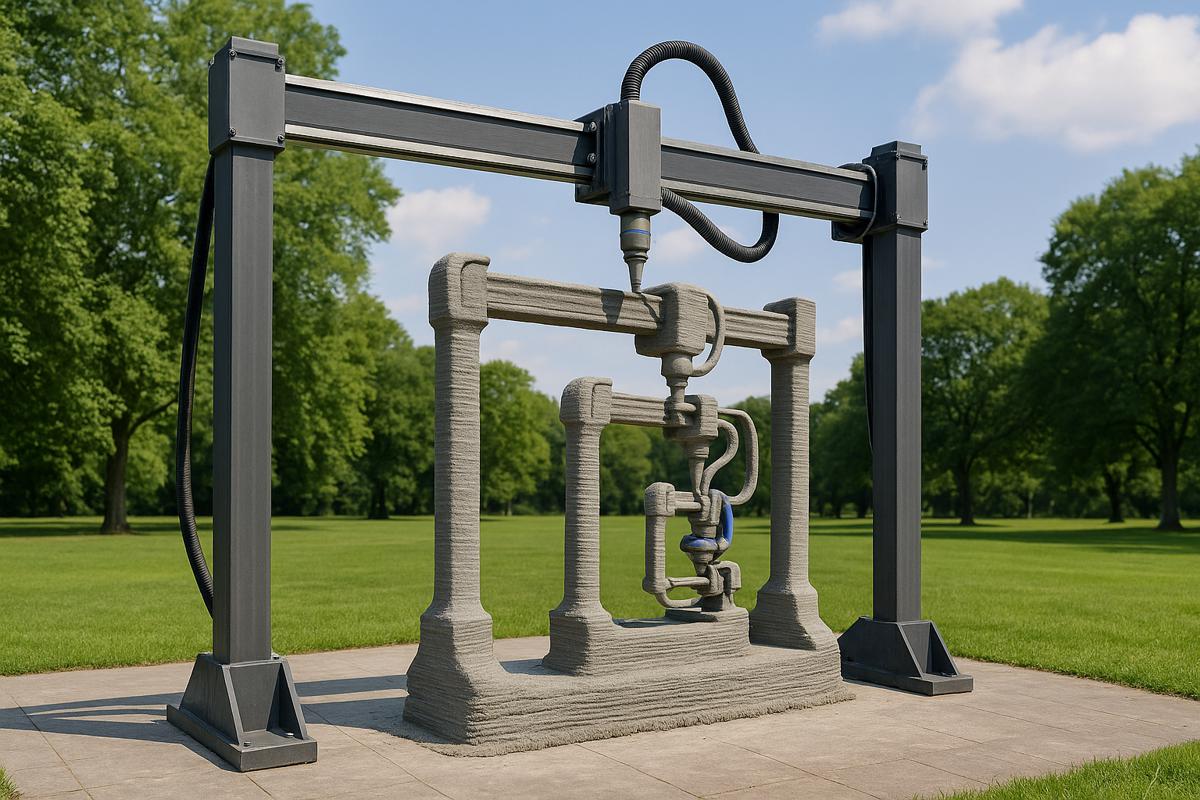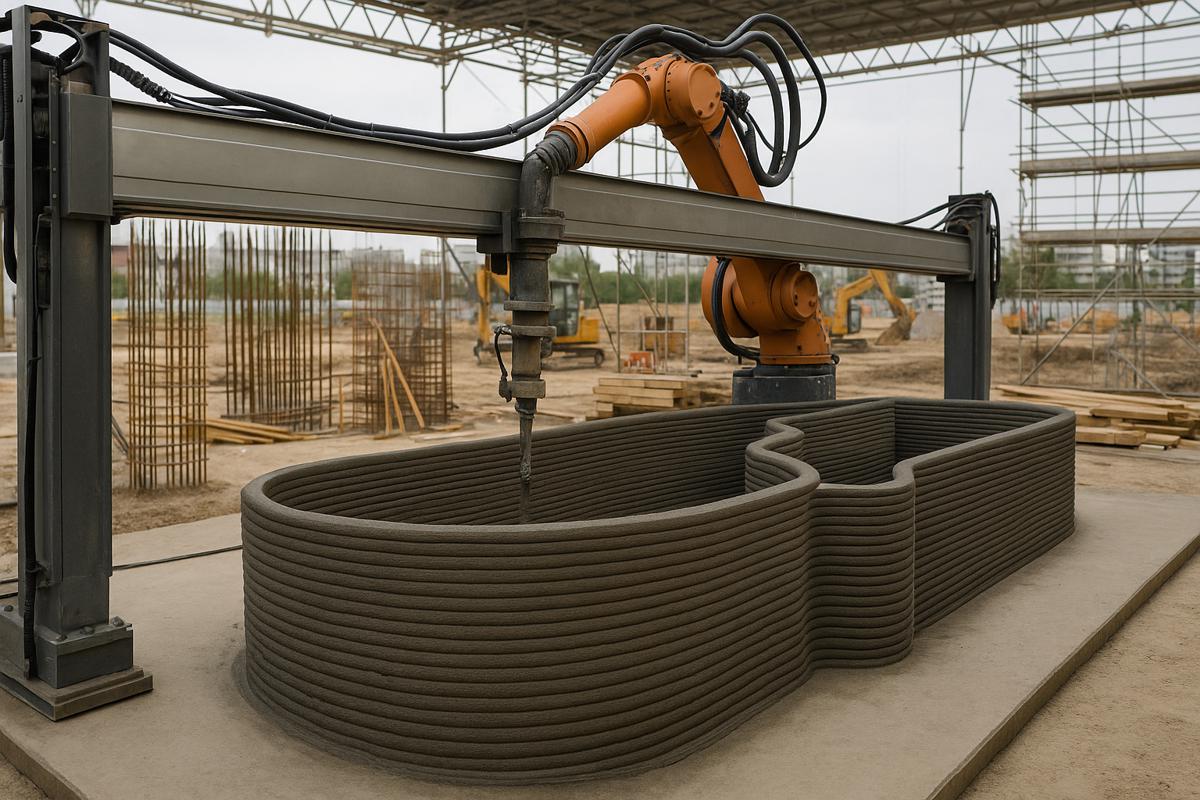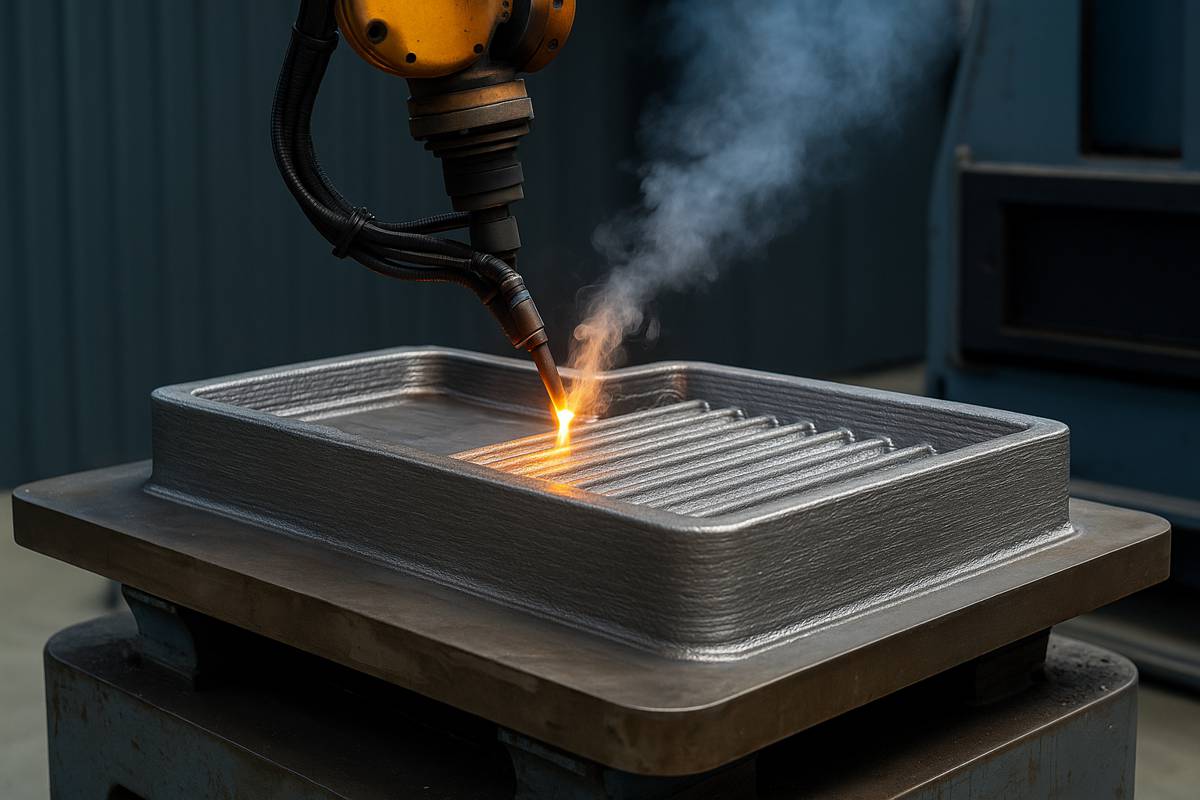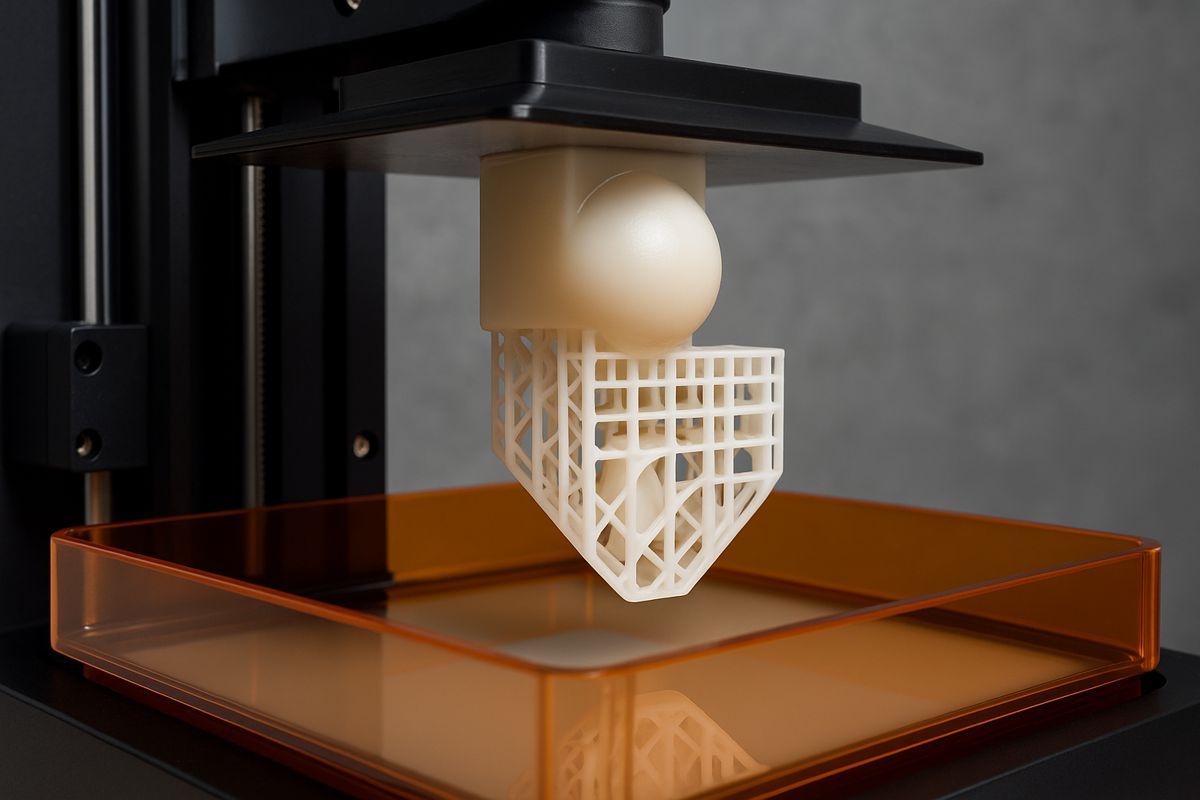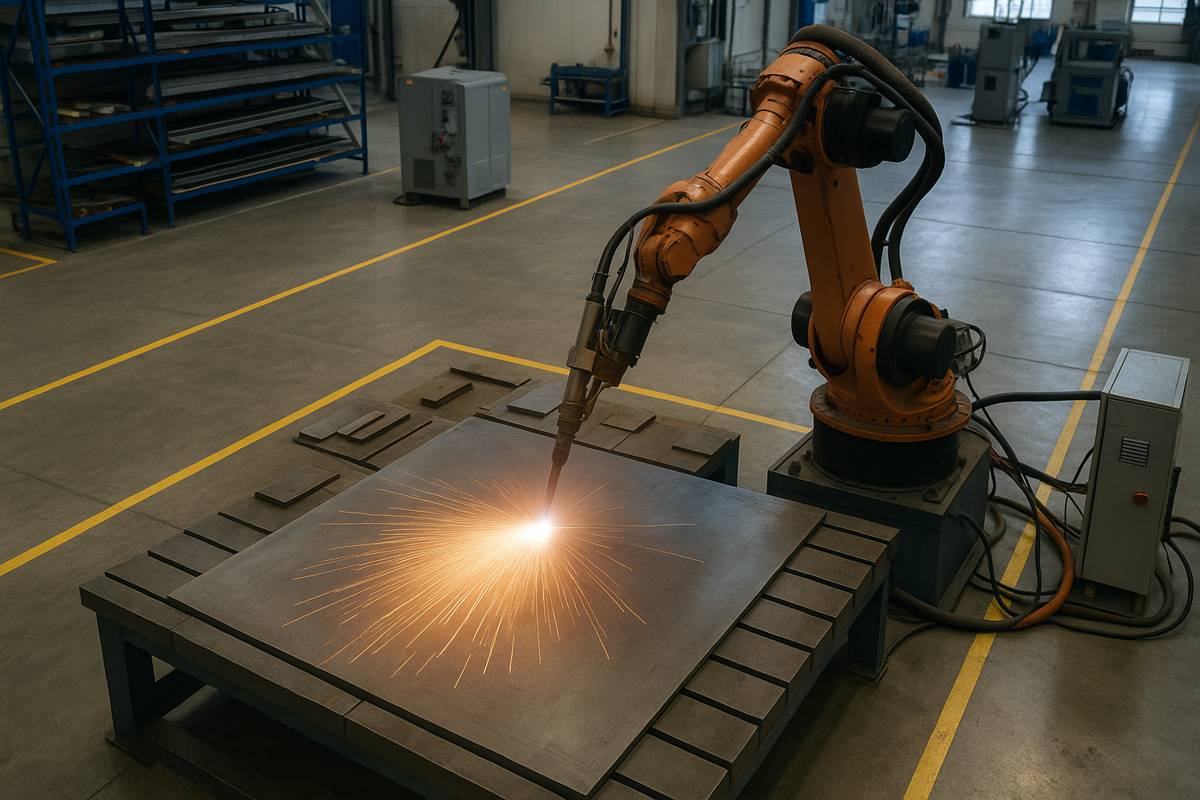ExOne developing portable 3D Printing Factory in a shipping Container
The ExOne Company has been awarded a U.S. Department of Defense contract to develop a fully operational, self-contained 3D printing “factory” housed in a shipping container.
Now under development, the rugged 3D printing factory pod would be set up in a standard shipping container, up to 40 feet long, to be deployed directly in the field, via land, sea or air, to manufacture parts to support war theatres, disaster relief, or other remote operations. ExOne’s 3D printers can produce parts in more than 20 metal, ceramic or composite materials.
Awarded by the Defense Logistics Agency (DLA) in August, the $1.6 million contract will focus specifically on improving the ruggedness of ExOne’s commercially available binder jet 3D printers for a wide range of operating conditions while maintaining exacting final part quality. Additionally, the project will aim to simplify use of the technology in the field with software and training, so the pod can be used with minimal technical knowledge.
“Binder jet 3D printing is a critical manufacturing technology for military use because of its speed, flexibility of materials, and ease of use,” said John Hartner, ExOne’s CEO. “We’re excited to collaborate with the U.S. Department of Defense and other partners to make our 3D printers more rugged for the military, which will also benefit our other manufacturing customers. Most importantly, we know that years from now, our technology will play an important role in filling critical needs quickly.”
As part of the project, ExOne is developing a special military-edition 3D printer that is capable of binder jet 3D printing more than 20 metal, ceramic and other powder materials into direct final products or tooling. The upgraded commercial 3D printer will have a unique body style and other features that will make it a rugged, military-grade product.
The Benefits of a Military 3D Printing Pod
By enabling a military team on-site to 3D print parts as needed, the downtime in a crisis can be reduced from weeks or months to only a few days or less, while also reducing military costs.
Ideally, military personnel would 3D print a digital file of a broken or damaged part and have a finished product in less than 48 hours without conventional tooling in the self-contained pod. This approach would save critical time (machined tooling to create parts typically takes 4-6 weeks), while also reducing waste and the need to carry expensive inventory in crisis zones.
A digital library of parts for 3D printing can be stored electronically, as opposed to racks of spare parts in a storage depot. When a digital file is not available for older parts, the item can easily be 3D scanned and printed in the field. What’s more, parts to solve unique problems in the field could also be designed digitally and 3D printed as needed.
ExOne’s binder jet 3D printing transforms powdered materials — metal, sand or ceramic — into highly dense and functional precision parts at high speeds. An industrial printhead selectively deposits a binder into a bed of powder particles creating a solid part one thin layer at a time, similar to printing on sheets of paper.
The technology is viewed as a desirable and sustainable production method, largely because of its high speed, low waste and cost, as well as material flexibility. ExOne has qualified more than 20 metal, ceramic and composite materials for its patented binder jetting process.
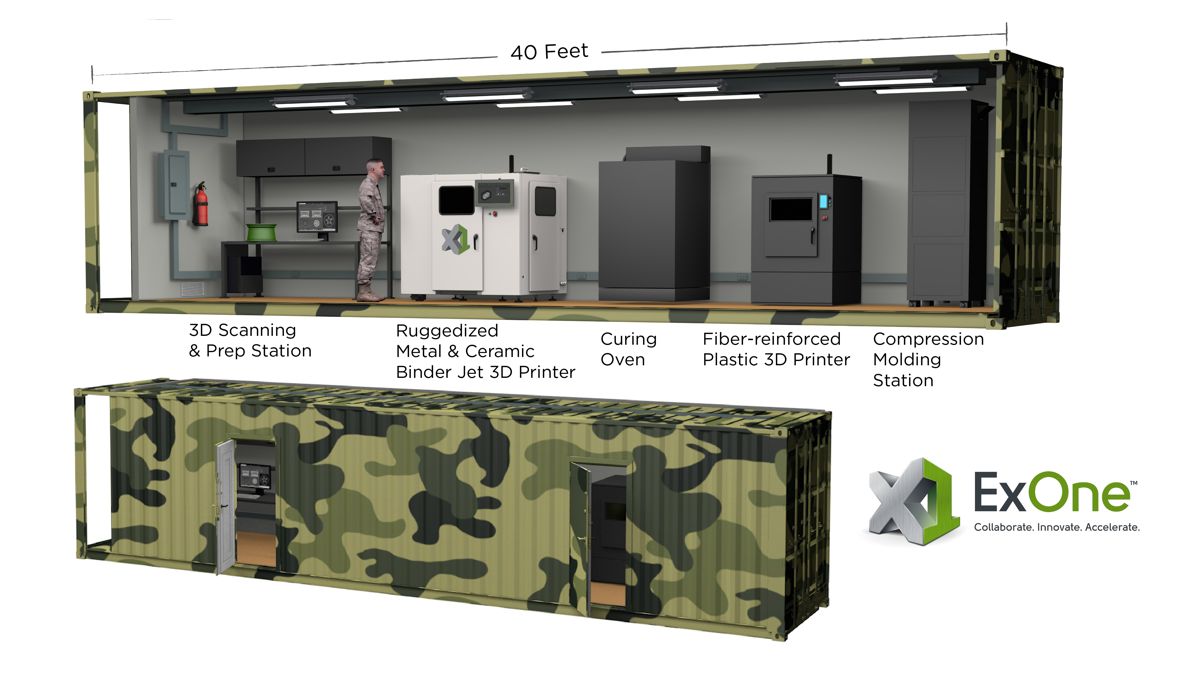
3D Printing Pod Project Partners
To speed development of the rugged 3D printing pod, ExOne will collaborate with several partners with unique engineering expertise on the project:
- Dynovas, Inc., based in Dover, DE, which specializes in materials engineering, composites manufacturing, and DoD weapons systems.
- Applied Composites – San Diego, a leading provider of complex composite components, assemblies, engineering, and tooling to the aerospace, defence, and space systems markets. AC-SD’s Reinforced Additively Manufactured Compression Assisted Moulding (RAMCAM) system is an enabler to the current pod project.










